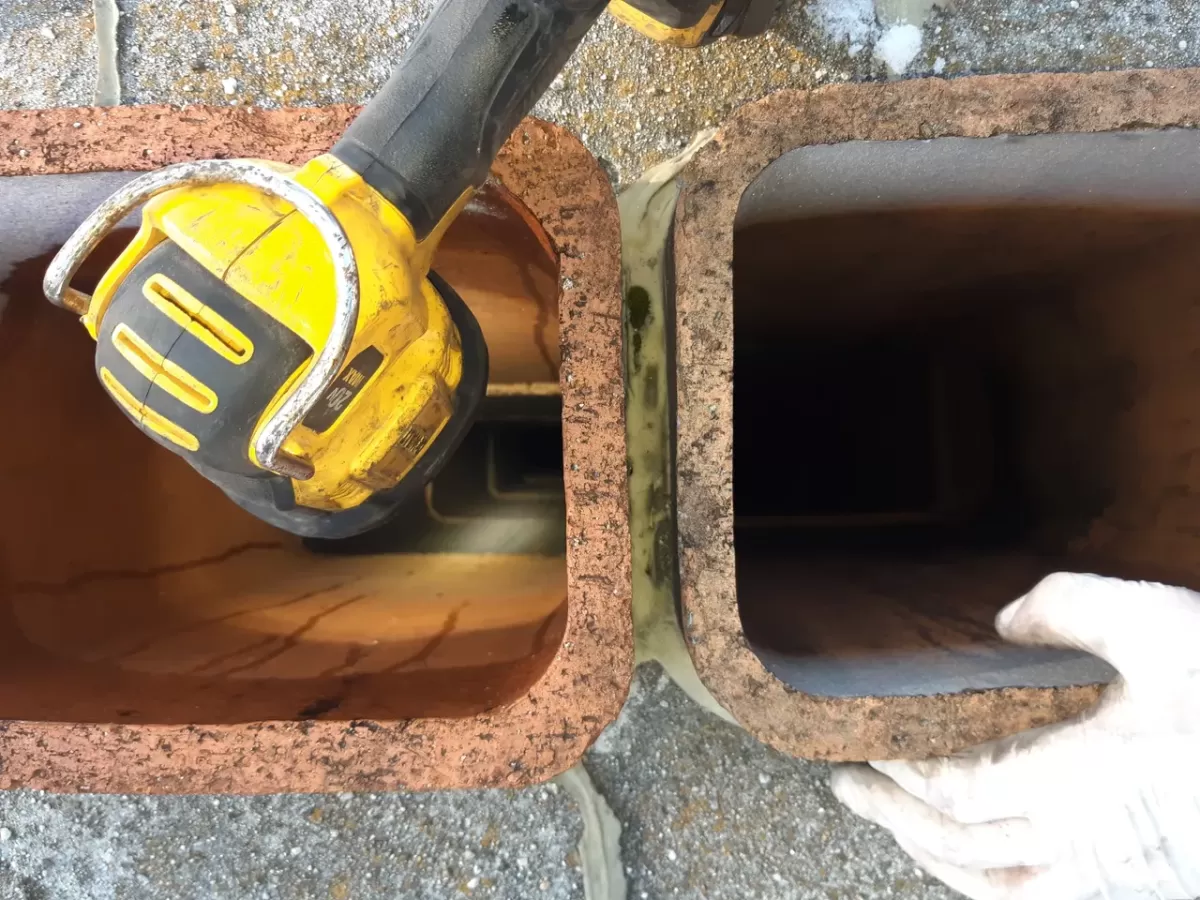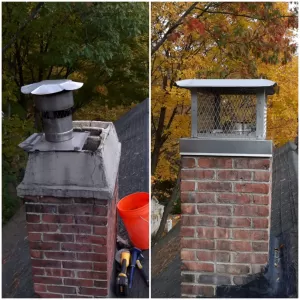What Is A Level 2 Chimney Inspection In NH?

A level two chimney inspection in NH is described by the NFPA 211 as being a chimney inspection where all accessible portions of the chimney are inspected. During a level 2 chimney inspection, a chimney technician, also known as a chimney sweep,
will be inspecting the chimney for safety in all areas that can be accessed without the use of demolition. That includes all attics and crawlspaces so long as those areas are accessible.
During a level 2 chimney inspection a certified chimney sweep will be looking for any potential code violations and or safety defects that could potentially pose a problem. In a situation where a wood stove or pellet stove is connected to the chimney, we will start by determining all the clearances that the wood or pellet stove requires from combustible materials. Most stoves have a listing tag on them that will tell the technician this information. Once we have the information we will begin measuring from the stove in all directions. If a combustible material is too close to the stove, we will notate it. If the wood stove or pellet stove has piping coming off of the top or back of the stove, we will verify what type of pipe it is. Single wall pipes generally require 18" from any combustible materials. Double wall stove pipes can vary and are based off of the listing for that particular brand of double wall stove pipe. If the stove pipe is too close to any combustible material, we notate that as well. We then inspect the interior and exterior of the wood stove in question to ensure that actual appliance is in good working condition. If we determine that the wood or pellet stove is in bad condition, we notate it. After clearances have been checked regarding the wood stove or pellet stove, the wood stove or pellet stove piping, and we have verified the condition of the actual appliance, we begin to check the condition of the flue. We begin by removing the pipe that connects the wood stove or pellet stove to the chimney and visually inspecting the flue. If we do not find any immediate signs of a bad flue; cracked flue liner, gaps between the mortar joints, etc., we begin inserting a specialized chimney camera into the chimney flue to make sure that there are no other defects higher up the flue that we wouldn't be able to see with the naked eye. If there are any defects in the flue, we will notate them.
After the condition of the flue is determined, we will then begin to check clearances to the chimney structure itself. This often requires accessing the basement or attic. Once in the basement or attic, we will be checking to see if there are any wooden rafters or other combustible material too close to the chimney. Too close is one of two things when it comes to masonry chimneys. If the chimney is interior, meaning that the chimney is primarily enclosed inside of the home, than the chimney structure requires two full inches of clearance from any combustible materials. If the chimney is an exterior chimney, then the chimney must one inch away from any combustible material including wooden rafters and combustible drywall.
While checking these clearances, we will also be inspecting the condition of the chimney where it passes through the attic and basement.
Once all interior inspection is complete, we will begin to set up safe roof access.
Once we have established safe roof access, we will begin to inspect the chimney where it passes through the roof. This requires inspecting the condition of the bricks and mortar, the condition of the chimney flashing, the condition of the cement chimney crown, and the condition of the chimney cap when applicable. We will then notate any problems we see with any of the above listed items.
A comprehensive report detailing any and all defects we have found will then be typed. This report will generally be accompanied with an approximate cost estimate to give the homeowner, or future homeowner a better idea of what it will cost to repair the defects that were found.
Level 2 chimney inspections should be completed any time there is a major change. A major change could be a change in ownership. (A home is being bought or sold) A major change could also be a natural disaster such as an earthquake or lightning strike that could have potentially damaged the chimney. A major change could also be a new appliance being installed into the chimney or if a chimney fire has taken place inside of the chimney. All of these scenarios would be valid reasons to request a level 2 chimney inspection in NH.
A level 2 chimney inspection on a fireplace is done a little bit differently. Level 2 chimney inspections on fireplaces are completed by referencing the NFPA 211, which is the standard for chimneys and vents in NH. The NFPA 211 also outlines how a fireplace should be built in NH.
In NH, a masonry fireplace has many regulations as to how they should be built, and for good reason! A fireplace is a place of great warmth, but also of certain danger if the fireplace is not built and maintained properly. A level 2 chimney inspection can get to the bottom of all potential dangers, other than that which is concealed behind walls and that which would require destruction of property in order to fully inspect. Masonry fireplaces can be safe places of comfort if inspected and cleaned properly.
Trust Anything Chimney when it comes to keeping your fireplace up to code for years to come! Our certified technicians undergo years of training in order to properly inspect, maintain, and repair NH fireplaces!
Not sure if your fireplace is up to today's safety standards? Call Anything Chimney at 603-716-5977 and find out today! Request a level 2 chimney inspection and receive the most comprehensive chimney inspection possible! We look forward to your call!


